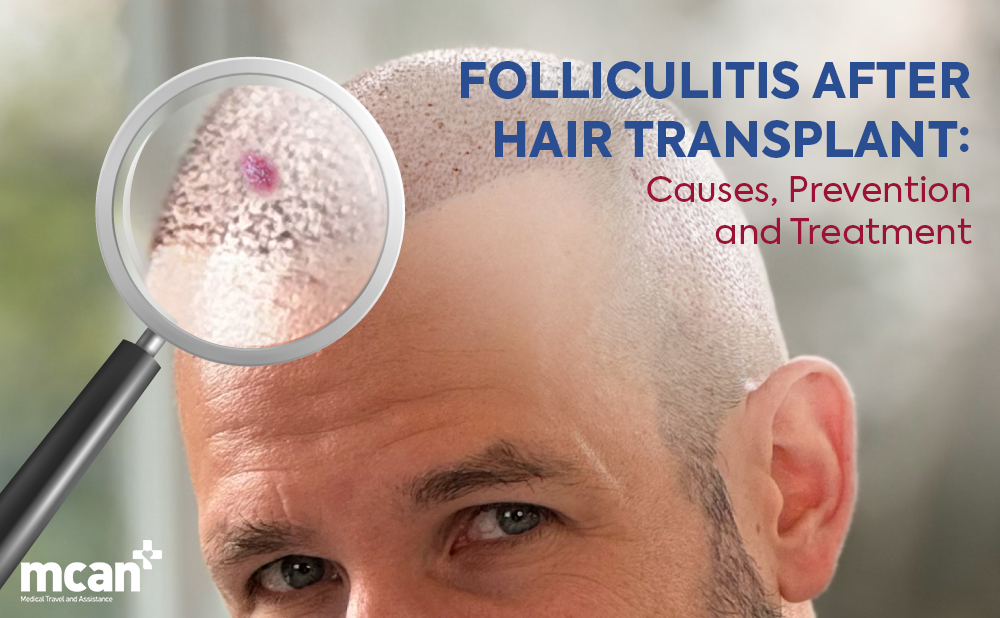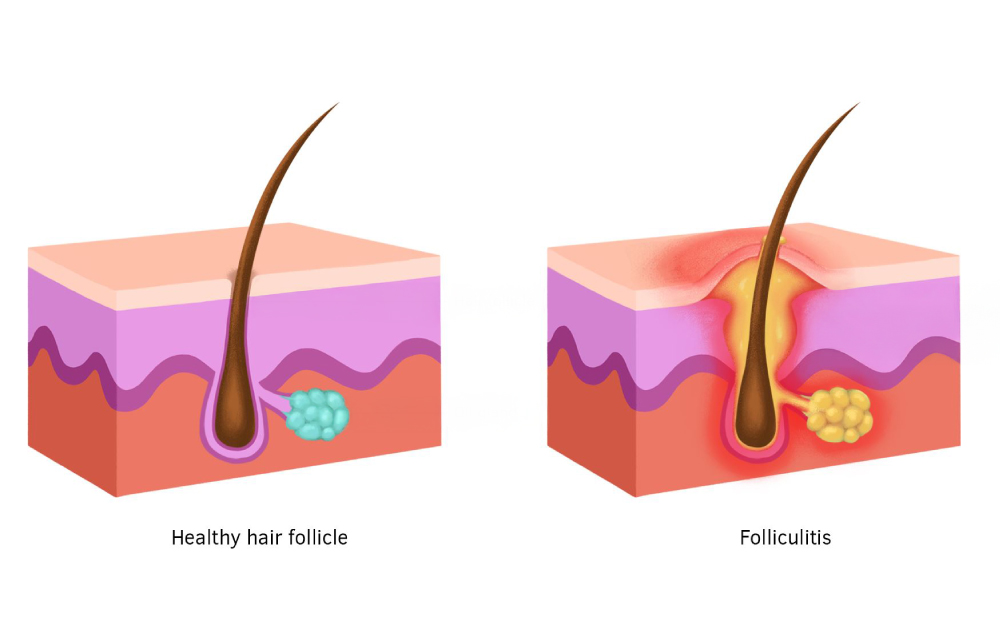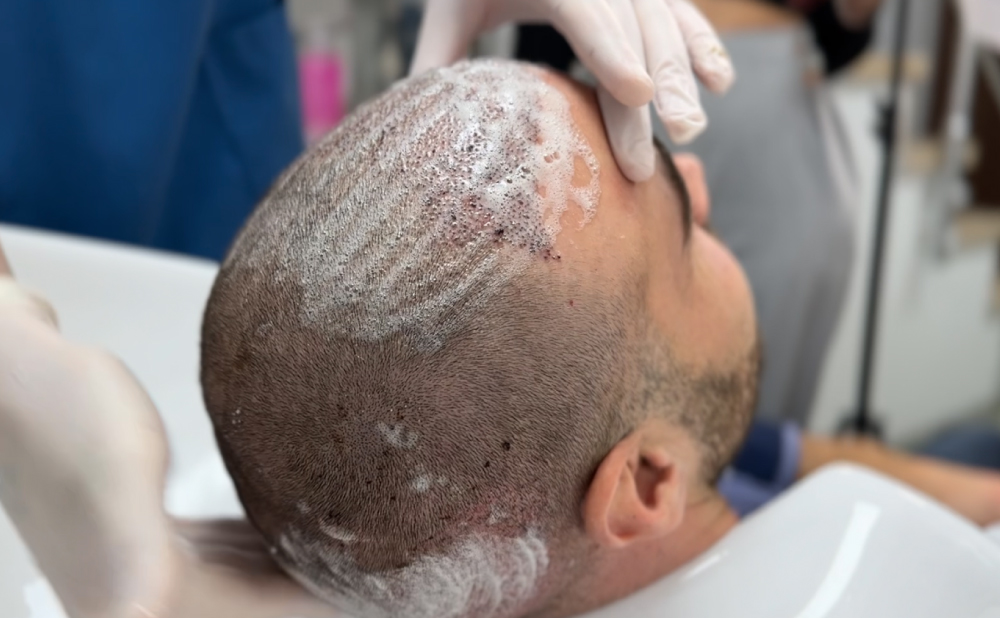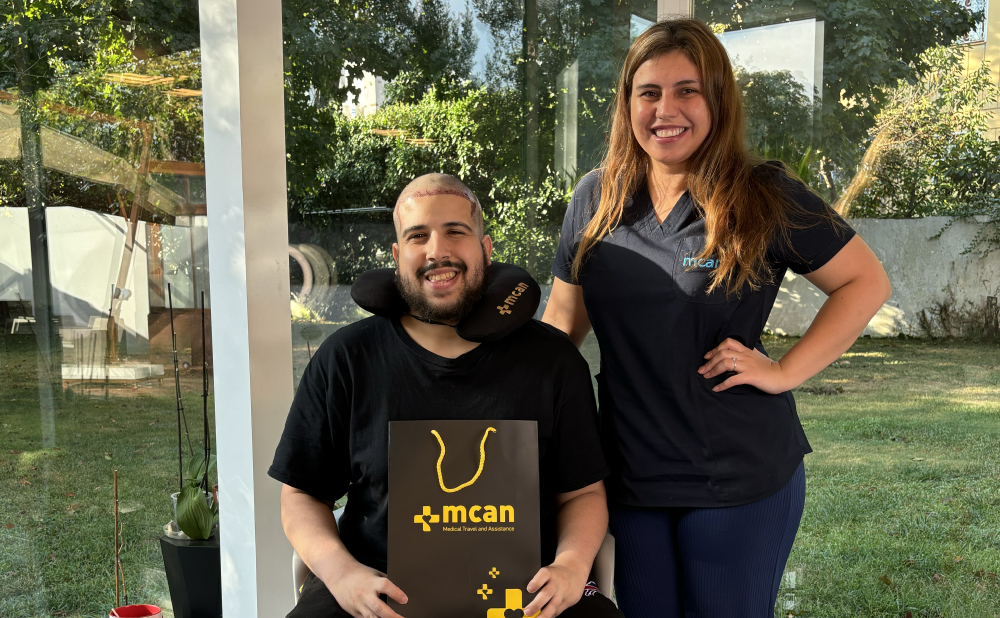
After a hair transplant, most patients focus on graft survival and visible growth. But while watching for new hair, it’s equally important to monitor the scalp for any unexpected changes—especially signs of irritation or inflammation. One of the most common yet often overlooked post-operative concerns is folliculitis after hair transplant.
Folliculitis refers to inflammation of the hair follicles, usually presenting as small red bumps or pimples on the scalp. In most cases, it’s mild and temporary. However, when ignored or improperly treated, it can cause discomfort, delay healing, and in rare cases, compromise the success of the procedure. The good news is that with the right care, it can be easily managed or avoided altogether.
In this article, you’ll learn what causes folliculitis, how to recognize it, what treatments are available, and the simple steps you can take to prevent it during recovery.
What Are Hair Transplant Scabs?
Folliculitis is a common skin condition that happens when hair follicles become inflamed. It typically appears as small red or white bumps, sometimes filled with pus, and can cause itching, tenderness, or a mild burning sensation. While it often resolves on its own, untreated cases may spread, become painful, or leave behind scarring.
After a hair transplant, the scalp goes through a healing process where each grafted follicle settles into place. During this time, the skin is more sensitive, and the risk of folliculitis increases. The inflammation may be triggered by bacteria, ingrown hairs, blocked follicles, or friction caused by touching, scratching, or wearing tight headwear. In most cases, it’s mild and temporary, but identifying it early is key to avoiding discomfort and protecting the success of the transplant.

What Causes Folliculitis After Hair Transplant?

Folliculitis can develop for several reasons, especially when the scalp is healing and the hair follicles are still adjusting after surgery. The causes can range from mild irritation to bacterial infections, and even small changes in scalp hygiene or habits can play a role.
Here are the most common factors that contribute to folliculitis after a hair transplant:
- Bacterial infection: The most frequent cause, typically involving bacteria like Staphylococcus aureus, which can enter the scalp through micro-injuries if the area isn’t kept clean.
- Ingrown hairs: As new hairs start to grow, some may curl back into the skin, leading to localized inflammation that mimics acne.
- Sebum buildup: Excess oil can clog healing follicles, especially if post-op washing is delayed or skipped.
- Friction and irritation: Wearing tight hats, rough pillowcases, or frequent touching can cause unnecessary pressure or damage to the scalp.
- Excessive sweating or poor ventilation: Warm, humid conditions can increase bacterial growth, particularly if the scalp remains moist for extended periods.
Understanding the full recovery timeline can also help you identify when symptoms like folliculitis are more likely to appear. You can check out the Hair Transplant Timeline: A Guide to Hair Transplant Recovery & Growth Chart for a week-by-week breakdown.
To make things even clearer, here’s a quick reference table:
| Cause | Description | Prevention Tip |
|---|---|---|
| Bacterial infection | Germs enter through small wounds or open follicles | Keep scalp clean, avoid touching |
| Ingrown hairs | New hairs curl into the skin during regrowth | Use gentle washing and avoid pressure |
| Sebum buildup | Oil and dead skin clog follicles | Wash with mild, pH-balanced shampoo |
| Friction | Tight hats or contact with rough surfaces | Wear loose, soft headwear only when necessary |
| Heat and sweat | Excess moisture creates a breeding ground for bacteria | Avoid strenuous activity and stay well-ventilated |
Is Folliculitis After Hair Transplant Dangerous?
In most cases, folliculitis after a hair transplant is mild and temporary. It may cause minor redness, irritation, or a few pimple-like bumps that clear up with proper hygiene and care. However, if ignored or improperly managed, it can lead to more serious complications.
While rare, severe or persistent folliculitis may affect the healing process. Inflammation around the grafts can interfere with how well the follicles settle and grow, and in some cases, may lead to scarring or loss of grafts. That’s why it’s important to monitor symptoms and respond early.
Signs that may indicate a more serious issue include:
- Painful, swollen bumps that don’t improve over time
- Pus-filled lesions or oozing sores
- Spreading redness beyond the affected area
- Throbbing pain or warmth around the follicles
- Fever or a general feeling of being unwell
If any of these symptoms appear, it’s best to contact your clinic or medical provider right away. Prompt treatment can prevent complications and protect your results. To recognize more serious warning signs during recovery, read Hair Transplant Gone Wrong: Signs of a Bad Hair Transplant.
How to Prevent Folliculitis After Hair Transplant

Preventing folliculitis begins with good post-operative care. During the first few weeks after a hair transplant, the scalp is more sensitive and vulnerable to irritation or infection. Consistent hygiene, careful handling, and following your clinic’s aftercare instructions can significantly reduce the risk.
Here are some key ways to keep the scalp healthy and folliculitis-free:
- Follow your washing schedule exactly as instructed. Start gently washing the scalp with the prescribed shampoo around day 3 to 5 (depending on clinic guidance) to remove buildup without disturbing the grafts.
- Avoid scratching or picking. Even if itching develops, resist the urge to touch or rub the scalp, as this can introduce bacteria and disrupt healing.
- Use any prescribed sprays or antiseptic solutions. These may contain ingredients that help reduce inflammation and keep bacteria at bay during early recovery.
- Keep the area clean and dry. Moist environments can encourage bacterial growth. After washing, gently pat the scalp dry with a clean towel.
- Avoid sweating, heat, and dust. Try to stay in cool, clean environments and postpone intense exercise or sun exposure for the first couple of weeks.
- Choose headwear carefully. If you need to wear a hat, make sure it is loose, clean, and breathable. Avoid tight caps that rub or press against the scalp.
- Change pillowcases and towels frequently. Use clean, soft fabrics and avoid anything that could harbor bacteria or cause friction.
How to Treat Folliculitis After Hair Transplant
If folliculitis appears after a hair transplant, treatment depends on the severity of the symptoms. Many mild cases resolve on their own with proper hygiene, while more persistent or inflamed areas may need topical or oral medication. The key is to act early without disrupting the healing grafts.
For mild cases:
- Warm compresses can help soothe the skin and reduce inflammation. Use a clean, soft cloth soaked in warm (not hot) water and apply it gently to the affected area for a few minutes.
- Antiseptic sprays or solutions, often provided by the clinic, may reduce surface bacteria and calm irritation.
- Medicated shampoos, such as those containing chlorhexidine or ketoconazole, may be recommended to control infection or fungal growth.
- Avoid shaving or cutting hair in the area until the skin has fully settled.
For moderate to severe cases:
- Topical antibiotic creams (like mupirocin) may be prescribed to treat bacterial infections directly at the site.
- Oral antibiotics may be necessary if there are multiple inflamed follicles, pus-filled lesions, or spreading redness.
- Corticosteroids might be used in rare cases where inflammation is extensive, but only under medical supervision.
Folliculitis vs. Normal Post-Transplant Redness or Pimples
After a hair transplant, it’s completely normal for the scalp to appear red or slightly bumpy, especially in the first two weeks. This can make it difficult to tell the difference between normal post-surgical healing and the onset of folliculitis.
Here’s how to tell them apart:
| Symptom | Normal Healing | Folliculitis | Infection |
|---|---|---|---|
| Redness | Common in early recovery | Often more localized | May spread or deepen in color |
| Itching | Mild and temporary | Moderate and persistent | Possible, with burning sensation |
| Pus-filled bumps | Rare | Yes, especially near grafts | Yes, with increased discharge |
| Pain | Light soreness | Localized tenderness | Throbbing or widespread pain |
| Fever or general illness | No | Uncommon | Frequently present |
Real Patient Insights: The Impact of Aftercare on Healing and Complications

Many patients worry about the healing process after a hair transplant, especially when unexpected symptoms appear. But with attentive follow-up and clear instructions, recovery often goes smoothly—even if minor issues arise along the way. This is something we consistently hear in patient reviews, where timely guidance and dedicated aftercare are often highlighted as key parts of a positive experience.
As patient Akhil shares: “I had a hair transplant with MCAN and this is my 6th month post treatment. I am happy with how my hair growth is progressing. MCAN was very patient throughout the entire surgery and diligent about answering my questions related to the post hair care and medication.”
Another patient, Ilze Levina, noted: “I had a hair transplant at this clinic and was satisfied with the service, punctuality and professional consultation support even after I returned to the UK. They answer all my questions quickly, clearly and efficiently and support me in my worries.”
These testimonials reflect not just the importance of surgical skill, but the value of being supported throughout the healing phase. Timely feedback, clear aftercare, and open communication make all the difference in achieving both comfort and results.
Frequently Asked Questions About Folliculitis After Hair Transplant
How do I know if I have folliculitis after my transplant?
Look for red or white bumps around the follicles, sometimes filled with pus. These may itch or feel tender. If the area becomes swollen or painful, it may be more than just normal healing.
Can folliculitis damage the transplanted hair follicles?
Mild cases typically don’t affect the grafts. However, if left untreated, more severe inflammation could interfere with healing or compromise graft survival in localized areas.
Is folliculitis after transplant the same as normal scabbing or redness?
No. Scabbing and mild redness are expected in the first 10–14 days. (To understand this part of recovery in more detail, see our blog Hair Transplant Scabs: Timeline to Expect Week by Week.)
How can I prevent folliculitis after a hair transplant?
Follow all aftercare instructions closely. Keep the scalp clean, avoid scratching or wearing tight headwear, and use recommended products. Good hygiene is key to prevention.
What should I do if folliculitis appears after surgery?
For mild symptoms, warm compresses and antiseptic sprays may help. Do not self-treat with harsh products. Contact your clinic for guidance before applying any creams or medications.
Can I continue washing my scalp if I have folliculitis?
Yes, but gently. Washing helps remove excess oil and bacteria. Use only the shampoo provided or approved by your clinic and avoid rubbing the affected area.
Will folliculitis affect my final results?
In most cases, no. When addressed early, folliculitis heals without affecting hair growth. For more on the normal shedding process post-surgery, visit Hair Transplant Shedding Phase: Does Transplanted Hair Fall Out?.
When should I contact the clinic about folliculitis?
If symptoms last more than a few days, worsen, or involve pus, swelling, or pain, reach out to your clinic right away. Early support can prevent further irritation and protect your results.
Expert Aftercare to Prevent Folliculitis After Hair Transplant in Turkey with MCAN Health
Irritations like folliculitis can occur during recovery, but with proper care, they are typically mild, manageable, and short-lived. Staying consistent with hygiene, following your clinic’s aftercare guidance, and knowing when to ask for support can go a long way in protecting your scalp and your results.
MCAN Health provides comprehensive care that extends well beyond the day of your procedure. With daily nurse visits, multilingual follow-up, and 24/7 support, every patient receives personalized attention designed to promote healthy healing and reduce risks like folliculitis. From gentle washing techniques to professional monitoring of the scalp, everything is in place to support a smooth, complication-free recovery.
With over 15,000 international patients, a 4.8-star rating, and globally recognized standards, MCAN Health is a leading provider of hair transplant in Turkey. Book your free consultation today and take the next step with expert care you can trust.
 Does Rhinoplasty Hurt? Common Questions About Pain and Recovery
Does Rhinoplasty Hurt? Common Questions About Pain and Recovery  Liposuction or Tummy Tuck: How to Choose the Best Option for Your Body
Liposuction or Tummy Tuck: How to Choose the Best Option for Your Body  Everything You Should Know About DHT Blockers
Everything You Should Know About DHT Blockers